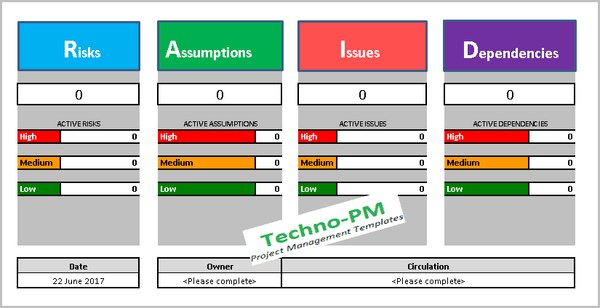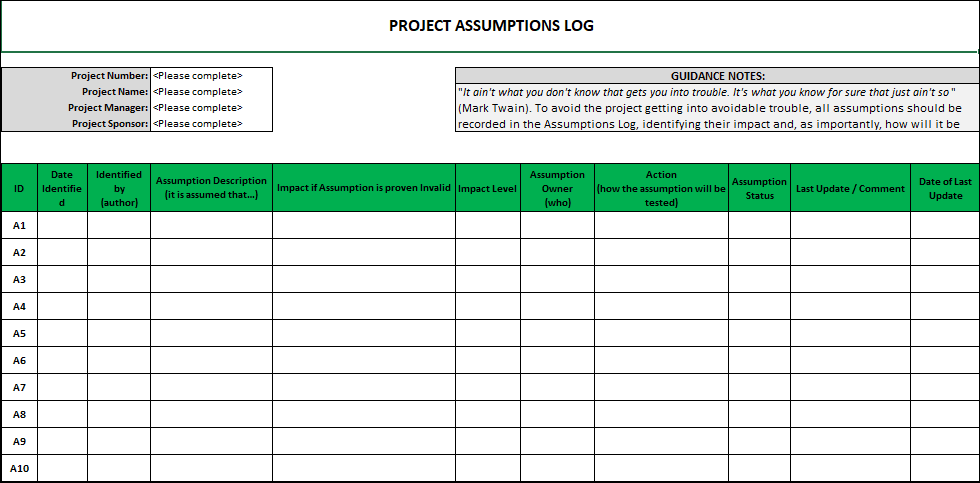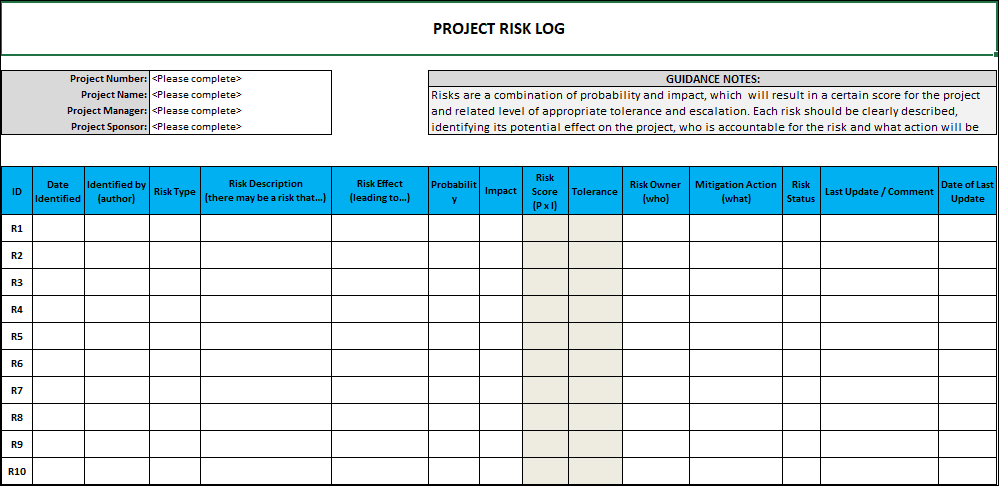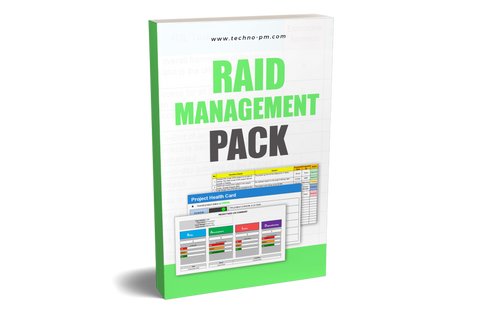RAID Log - Benefits of Maintaining a RAID Tracker
What is a RAID Log?
A RAID log is a common project management tool used to track Risks, Assumptions, Issues, and Dependencies. It enables project managers and stakeholders to have a clear understanding of potential risks and challenges that may impact the project's success. By documenting and regularly updating the RAID log, teams can effectively manage and mitigate risks, address issues, and ensure that dependencies are addressed in a timely manner.

RAID Log
Let’s understand the RAID components in detail:
- Risks: uncertain events which may have an impact on the project, either positive (opportunity) or negative (threat).
- Assumptions: beliefs that are accepted as true, which, if proven invalid, will have an effect on the project.
- Issues: risks that have materialized or any problems incurred which impacted the project.
- Dependencies: links between projects, work packages, or deliverables that, if delayed, will impact the project.
Benefits of Using a RAID Log
- Keeps your project organized and on track as all information is centralized, making it easier to monitor and control project status.
- Makes the information easier to store and retrieve, as the different logs are combined into a single document (and is always a better option rather than keeping everything in your head!).
- Gives confidence to key stakeholders that the project is being closely monitored, resulting from information visibility.
- Brings focus, as it serves as an aide-memories to give appropriate attention to each area, ensuring that areas that are typically overlooked, such as assumptions, are not forgotten.
- Enables accountability for mitigating actions, which is where risks and issues usually fall through the cracks.
- Creates a sense of ownership by inviting all members of the project team to contribute to the identification of new areas of concern.
- Useful for auditing purposes (internal or external).

Assumptions Log
Best Practices on Using and aMintaining a RAID Log / RAID Tracker
- The RAID Log is a living document and should not be something you use at the beginning of the project and then store away. It should be continually updated as changes occur or more information is gained.
- Put the "RAID Log Update" as an item of your project meetings agenda and go through it with your team.
- Make the RAID Log easily available in a central location so that it can be used collaboratively by all key stakeholders (unless there's something confidential or sensitive information on it, of course!).
- Identifying risks and issues without identifying actions to mitigate them or making decisions to resolve them will not be of much use. Identifying actions is as important as identifying problems!
- The project manager or the sponsor is usually accountable for removing obstacles to the project, but that does not mean that they should be responsible for carrying out all their actions.
- Distribute responsibilities among the team and designated matter experts - accountability and responsibility are two different concepts,remember that assumptions and dependencies are as important (and dangerous) as risks and issues.
- Be ready to accept that your assumptions may be wrong. However, it's better to log a wrong assumption and actively test it and sorted it out than to believe that all your assumptions are correct and do not log them just to realize, usually too late, that you should have challenged them before
- It's not just important to log the right risks, assumptions, issues, and dependencies; you also need to log them at the right level of detail: too many and too much detail makes you lose sight of what really matters and is impractical to manage; too few, and too little detail does not offer the granularity needed to assign responsibilities or assess progress. This is a difficult one, but you need to strive for balance.
- Finally, remember that good project management is not about the absence of risks and issues (if you found a project that does not have any risks or issues, please share your secret!) but about how well you manage them. And that's where this RAID Log can help you.
 Risk Log
Risk Log
Tips About RAID Excel Template
- Risks are a combination of probability and impact, which will result in a certain score for the project and related level of appropriate tolerance and escalation.
- Each risk should be clearly described, identifying its potential effect on the project, who is accountable for the risk, and what action will be employed to mitigate it.
- Risks should be part of the agenda of every team meeting. Checkout sample meeting agenda templates.
- To avoid the project getting into avoidable trouble, all assumptions should be recorded in the Assumptions Log, identifying their impact and, as importantly, how it will be tested if the assumption is actually valid or not.
- While issue management is, by definition, a reactive endeavor, it is still important that issues are resolved as soon as possible in the project by identifying the necessary action that could remove obstacles to the project's success.
- It is useful to record dependencies in a separate log to allow for a greater focus control level.
- Dependencies identified should refer to receiving products (inbound) and dependencies towards other projects (outbound).
- Where appropriate, dependencies can also be added to project schedules (e.g., MS Project).




